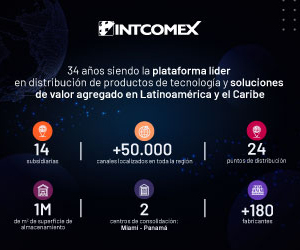In recent years, leading operators around the world have selected Samsung as their partner in the journey towards next-generation networks. Samsung is taking 5G innovation to the next level with its industry-leading virtualized Radio Access Network (vRAN) solution that will enable mobile operators to bring greater flexibility, scalability, and resource efficiency in network management.
Next-Level Capabilities With a Wide Range of Support
Leading global operators choose Samsung’s vRAN for its ensured quality, credibility and robustness, delivering performance similar to that of traditional hardware-based equipment. The company’s vRAN is primed to support mobile operators and enterprises with its ability to cover a wide range of spectrums—from low-band to mid-band—as well as its flexibility in terms of supporting solutions for both outdoor and indoor environments.https://www.youtube.com/embed/w0ZAw-sg-y8?rel=0
“Using the company’s own independently developed end-to-end vRAN software stack, Samsung’s solution boosts network performance and brings agility to the network. This in-house technology is the key feature of Samsung’s vRAN that distinguishes our solution from others in the industry,” said Junehee Lee, Executive Vice President and Head of R&D, Networks Business at Samsung Electronics. “As a global leader in vRAN technology, we will continue to strengthen our vRAN capabilities, while aiming to maintain strong leadership in virtualized networks and redefining what is possible for 5G networks.”
Technological innovation has been key to Samsung’s leading advancement of virtualized solutions. The evolution of the company’s vRAN solution can be broken down into three different phases, which are outlined below.
First-Generation Virtualized RAN – The Virtualized Central Unit (vCU), Commercialized in 2019
Samsung successfully developed its vCU in 2016 to initiate virtualization in mobile networks. The vCU addresses upper layer processing functions in the RAN. It is generally installed in a centralized location of an operator’s network to reduce the number of anchor point handovers, improving network quality and reliability.
The company carried out multiple trials in Korea, Japan and the U.S. using its vCU and in 2019, successfully deployed this solution for the world’s first 5G commercial networks in Korea and the U.S.
Second-Generation Virtualized RAN – The Virtualized Distributed Unit (vDU), Commercialized in 2020
Harnessing its decades of experience and long-standing leadership in RAN technology, Samsung developed a vDU using its independently developed software stack to deliver outstanding performance.
The vDU is responsible for real-time processing functions, and can either reside with the vCU, or on-site with the radio. By allowing the vCU and vDU to be placed in different locations, vRAN offers cost-effective deployment and operation that meets a range of speed, latency, throughput and quality requirements.
In 2020, Samsung introduced its fully virtualized end-to-end 5G RAN solution, comprised of a vDU and vCU, which was later rolled out in collaboration with a leading U.S. operator. The solution’s launch made it the first technology of its kind to achieve wide-scale commercialization. Shortly after that, Samsung expanded its vRAN capability to become the first in the industry to provide support for the Massive MIMO radios on mid-band, demonstrating top 5G vRAN speeds. In this trial, Samsung’s vRAN achieved commercial network performance that was on par with traditional hardware-based equipment.
Next-Generation Virtualized RAN With Enhanced Capabilities – Increased Capacity With Hardware Accelerators, To Be Commercialized in 2022
This year, Samsung has taken vRAN to the next level with its own software stack along with a hardware accelerator, which further increases the capacity of its vRAN to support more cells. The hardware accelerator is a dedicated device that works with the CPU in COTS server to improve processing capacity.
Recently, Samsung completed the industry’s first vRAN data session over C-Band spectrum in a live network, leveraging its software-based vRAN running on COTS servers with the hardware accelerator. In this trial, which was conducted with a prominent U.S. operator, Samsung achieved speeds close to the theoretical peak.
Samsung’s journey to highly capable vRAN has been a long and challenging one. But now, with the company having delivered vRAN with C-band Massive MIMO support and having conducted a successful live network trial in the U.S., the future of vRAN looks bright.








